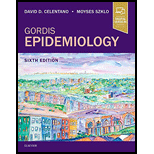
Concept explainers
Introduction: The type of medical research used to investigate the cause of disease and to establish a relation between risk factors and outcomes of health is known as cohort studies. The two main types of cohort study are prospective cohort studies and retrospective cohort studies.
Answer to Problem 1RQ
Correct answer: “In cohort studies of the role of a suspected factor in the etiology of a disease, it is essential that the exposed and unexposed groups under study be as similar as possible with regard to possible confounding factors.” Hence, the correct answer is option d.
Explanation of Solution
Reason for the correct answer:
Prospective cohort study is a research study that follows the time groups of people who are similar in many ways but differ in certain characteristics. Retrospective cohort studies also called longitudinal cohort study is mainly based upon the exposure status and compare their incidence of diseases.
The advantages of cohort studies are as follows:
- It allows the calculation of incidence in exposure groups.
- It indicates the temporal sequence.
- It facilitates the study of rare exposures.
- It decreases the possibility of results to be biased.
- It allows examination of multiple effects of single exposure; therefore, several disease outcomes can be simultaneously studied.
The factor that correlates both dependent and independent factors in order to explain the correlation between two factors is referred to as confounding factor. Therefore, in cohort studies of the suspected factor in etiology of disease, both exposed and nonexposed groups must be alike with respect to confounding factors.
Option d. is given as “The exposed and unexposed groups under study be as similar as possible with regard to possible confounding factors”.
In cohort studies of the suspected factor in etiology of disease, both exposed and nonexposed groups must be alike with respect to confounding factors.
Hence, the correct answer is option d.
Reasons for incorrect answers:
Option a. is given as “There be equal numbers of persons in both study groups”.
In cohort studies of the suspected factor in etiology of disease, there will not be any equal numbers of persons in both study groups.
Hence, option a. is incorrect.
Option b. is given as “At the beginning of the study, those with the disease and those without the disease have equal risks of having the factor”.
In cohort studies of the suspected factor in etiology of disease, there will not be any equal risks of having the factor in a person with or without the disease.
Hence, option b. is incorrect.
Option c. is given as “The study group with the factor and the study group without the factor be representative of the general population”.
In cohort studies of the suspected factor in etiology of disease, there will not be any representative of general population in the study group with or without the factor.
Hence, option c. is incorrect.
Option e. is given as “Both b and c”.
In cohort studies of the suspected factor in etiology of disease, there will not be any equal risks of having the factor in a person with or without the disease. Also, there will not be any representative of general population in the study group with or without the factor.
Hence, option e. is incorrect.
Hence, options a., b., c., and e. are incorrect.
In cohort studies of the suspected factor in etiology of disease, both exposed and unexposed groups must be alike with respect to confounding factors.
Want to see more full solutions like this?
Chapter 8 Solutions
Gordis Epidemiology
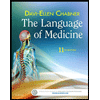 The Language of Medicine, 11eHealth & NutritionISBN:9780323370813Author:Davi-Ellen Chabner BA MATPublisher:Saunders
The Language of Medicine, 11eHealth & NutritionISBN:9780323370813Author:Davi-Ellen Chabner BA MATPublisher:Saunders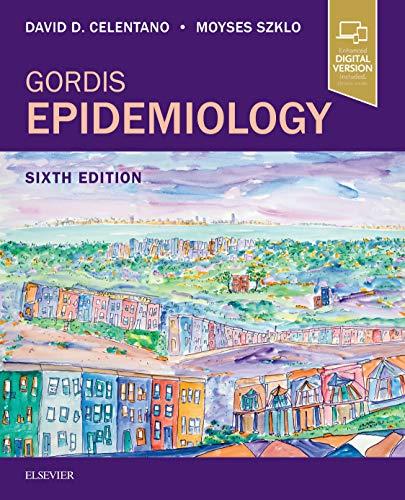 Gordis EpidemiologyHealth & NutritionISBN:9780323552295Author:David D. Celentano, Moyses SzkloPublisher:ELSEVIER
Gordis EpidemiologyHealth & NutritionISBN:9780323552295Author:David D. Celentano, Moyses SzkloPublisher:ELSEVIER Nutrition Through The Life CycleHealth & NutritionISBN:9781337919333Author:Brown, Judith E.Publisher:Cengage Learning,
Nutrition Through The Life CycleHealth & NutritionISBN:9781337919333Author:Brown, Judith E.Publisher:Cengage Learning,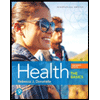 Health: The Basics (13th Edition)Health & NutritionISBN:9780134709680Author:Rebecca J. DonatellePublisher:PEARSON
Health: The Basics (13th Edition)Health & NutritionISBN:9780134709680Author:Rebecca J. DonatellePublisher:PEARSON Understanding Nutrition (MindTap Course List)Health & NutritionISBN:9781337392693Author:Eleanor Noss Whitney, Sharon Rady RolfesPublisher:Cengage Learning
Understanding Nutrition (MindTap Course List)Health & NutritionISBN:9781337392693Author:Eleanor Noss Whitney, Sharon Rady RolfesPublisher:Cengage Learning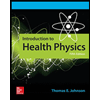 Introduction To Health PhysicsHealth & NutritionISBN:9780071835275Author:Johnson, Thomas E. (thomas Edward), Cember, Herman.Publisher:Mcgraw-hill Education,
Introduction To Health PhysicsHealth & NutritionISBN:9780071835275Author:Johnson, Thomas E. (thomas Edward), Cember, Herman.Publisher:Mcgraw-hill Education,





